Xi’an, the capital of Shaanxi Province and the eastern terminus of the Silk Road, is famed as one of China’s oldest capitals. Once home to 13 dynasties, the city still preserves its grandeur—from the world-renowned Terracotta Army to vibrant Muslim Quarter food stalls. Whether you’re cycling atop the Ming-era City Wall or marveling at Tang dynasty pagodas, Xi’an welcomes travelers with timeless charm and lively street life.
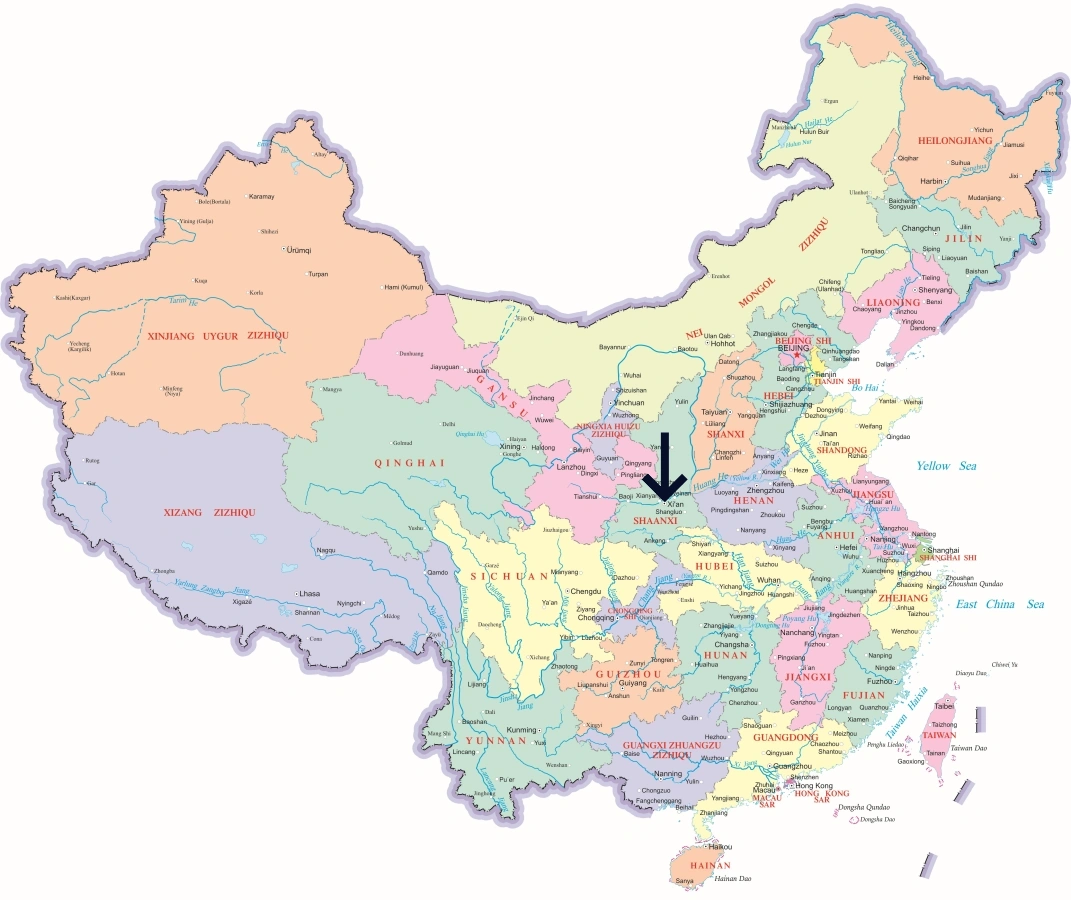
Xi’an’s highlights span UNESCO treasures and atmospheric neighborhoods. Stand in awe before the Terracotta Army, explore the exhibits at Shaanxi History Museum, or climb the ancient City Wall for sweeping views. Visit the Giant Wild Goose Pagoda, admire the Bell and Drum Towers, and dive into the bustling Muslim Quarter for street food and culture. For nature lovers, the sacred peaks of Mount Hua await just outside the city.
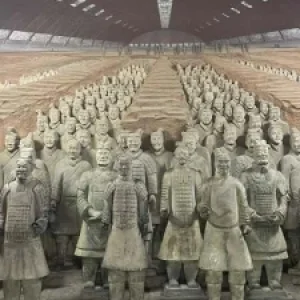
The Terracotta Army is a UNESCO World Heritage site in Xi’an, featuring thousands of life-sized clay soldiers and horses built to guard Emperor Qin Shi Huang’s tomb over 2,000 years ago.
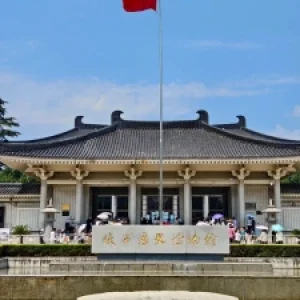
Shaanxi History Museum in Xi’an displays over 370,000 cultural relics, showcasing ancient Chinese civilization from prehistoric times to the Tang dynasty. It’s often called the “treasure house of China.”
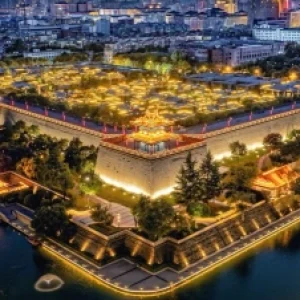
Xi’an City Wall is one of the best-preserved ancient walls in China. Built in the Ming dynasty, it encircles the old city and offers great views for cycling and walking.
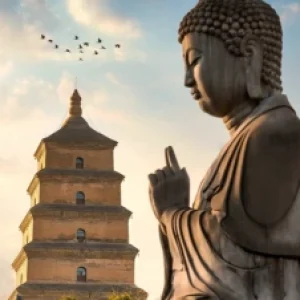
The Giant Wild Goose Pagoda, built in 652, is a Buddhist landmark in Xi’an. It was used to store scriptures brought from India and symbolizes the spread of Buddhism in China.
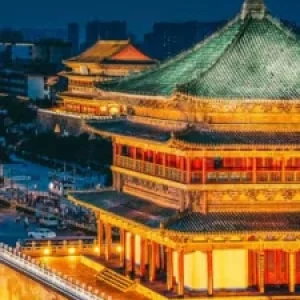
The Xi’an Bell Tower, built in 1384, stands at the city’s center. This Ming dynasty structure is a symbol of Xi’an and offers panoramic views of surrounding ancient streets.
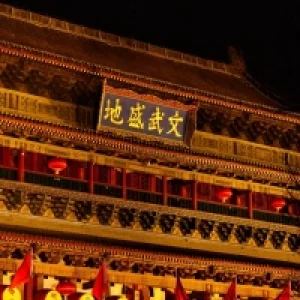
The Xi’an Drum Tower, near the Bell Tower, was built in 1380. It once marked time with drums and now houses exhibitions of traditional Chinese drums and folk culture.

Mount Hua is one of China’s Five Great Mountains, famous for its steep trails and breathtaking scenery. Adventurous travelers love its thrilling plank walk and stunning sunrise views.
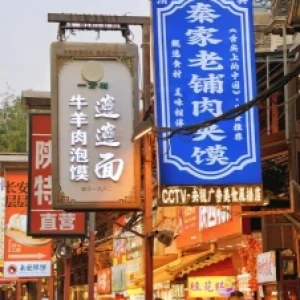
The Xi’an Muslim Quarter is a lively food street with traditional snacks, souvenirs, and local culture. Influenced by Silk Road history, it’s the heart of the city’s Muslim community.
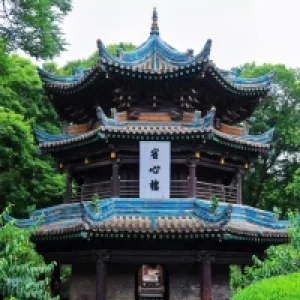
The Great Mosque of Xi’an, built in 742, blends Chinese architecture with Islamic culture. Located in Huajue Lane, it is one of the oldest and most famous mosques in China.
As a culinary hub of northwestern China, Xi’an offers bold, hearty flavors shaped by Silk Road influences. Try Roujiamo (Chinese hamburger), Yangrou Paomo (mutton soup with crumbled bread), and wide Biangbiang noodles drenched in chili oil. Cool off with Liangpi (cold skin noodles) or enjoy a steaming bowl of Hulatang (spicy pepper soup). For something sweet, sample Zenggao (sticky rice cake with dates and beans). The Muslim Quarter is a paradise for street food adventurers.
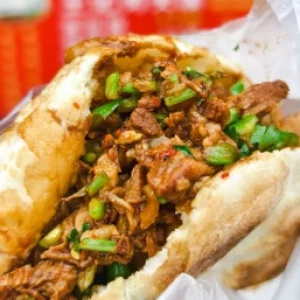
Roujiamo, often called the “Chinese hamburger,” is a crispy flatbread stuffed with tender braised pork. Originating in Xi’an, it’s a flavorful street food loved nationwide for its rich taste.
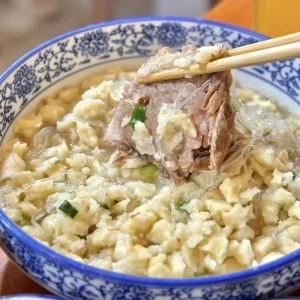
Yangrou Paomo is a traditional Xi’an dish where flatbread pieces soak in mutton soup. The rich broth, tender lamb, and chewy bread create a warm, hearty, and unforgettable dining experience.
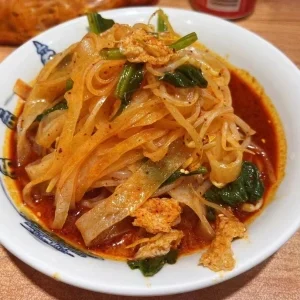
Liangpi, or “cold skin noodles,” is a refreshing Xi’an specialty. Made from wheat or rice flour, it’s served cold with chili oil, vinegar, garlic, and cucumber for a tangy, spicy flavor.
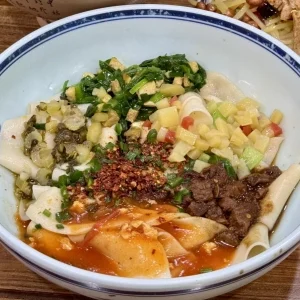
Biangbiang noodles are wide, hand-pulled noodles famous for their chewy texture. Often topped with chili oil, garlic, and vegetables, they are hearty, spicy, and a beloved street food in Shaanxi.
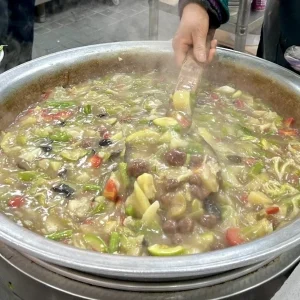
Hulatang, or spicy pepper soup, is a traditional breakfast dish in Xi’an. It features beef, vegetables, and flour-thickened broth flavored with chili, pepper, and herbs, offering warmth and bold flavors.

Zenggao is a sweet Xi’an rice cake made by steaming glutinous rice with red beans and dates. Soft, sticky, and naturally sweet, it’s a popular local snack with centuries-old history.
Xi’an’s expanding metro system connects major attractions efficiently, complemented by buses and affordable taxis. The city is served by Xi’an Xianyang International Airport (XIY), offering both domestic and international flights. High-speed rail links make travel easy: reach Beijing in about 4.5 hours, Chengdu in under 4 hours, and Zhengzhou in 2 hours. Cycling on the City Wall is a unique way to explore, while apps like Didi make local rides simple.
Luxury hotels like Sofitel Legend People’s Grand Hotel and Wyndham Grand cluster near the Bell Tower, placing you close to historic sites. Mid-range travelers often stay near the City Wall or Muslim Quarter for convenient dining and sightseeing. Budget hostels can be found around South Gate, popular with backpackers. For nature escapes, boutique stays near Mount Hua provide easy access to hiking trails and sunrise views.
With iconic landmarks, flavorful food, and modern transport, Xi’an makes for an unforgettable journey. Spend mornings exploring imperial relics, afternoons tasting street snacks, and evenings watching Tang-style music and dance shows. Don’t miss the chance to photograph the Terracotta Warriors up close, sip tea in a traditional courtyard, and wander lantern-lit alleys in the Muslim Quarter. Every moment echoes the city’s 3,000-year history.
The best time to visit Xi’an is during spring (March to May) and autumn (September to October) when the weather is mild and skies are clearer, while the first week of October, known as Golden Week, should be avoided due to heavy crowds. Most payments are made digitally through Alipay and WeChat Pay, but carrying small bills is still useful for markets and street snacks. Summers are hot and rainy, winters are cold and dry, so an umbrella and layered clothing are recommended. When visiting the Muslim Quarter or the Great Mosque, it is important to respect local religious customs by dressing modestly and avoiding prayer areas during worship, ensuring a smoother and more enjoyable travel experience.
Xi’an, the capital of Shaanxi Province, is one of China’s most historic cities and a major cultural center. It covers about 10,100 sq km and has a permanent population of approximately 13 million. Here’s a breakdown by major districts:
Note: Population figures are based on the latest estimates and may vary slightly.
Xi’an has a temperate continental climate, with hot, humid summers, cold, dry winters, and mild spring and autumn. Sandstorms occasionally affect the city in spring, while summer brings heavy rainfall.
Month-by-month overview:
Best travel season: March to May and September to October.
Here are the postal and telephone codes for major districts in Xi’an:
Explore detailed travel guides for China’s most popular cities, covering attractions, local food, accommodations, and transportation tips.

 English (US)
English (US)